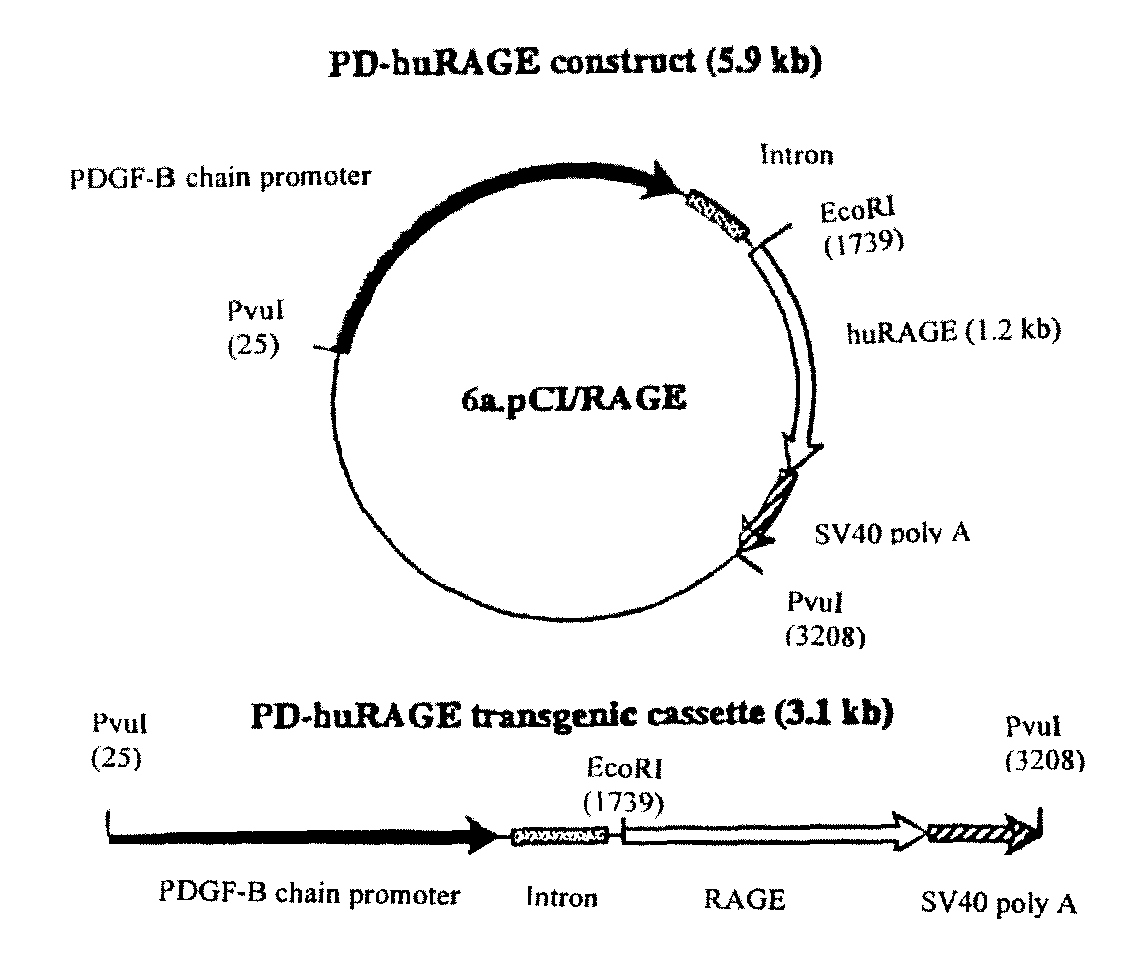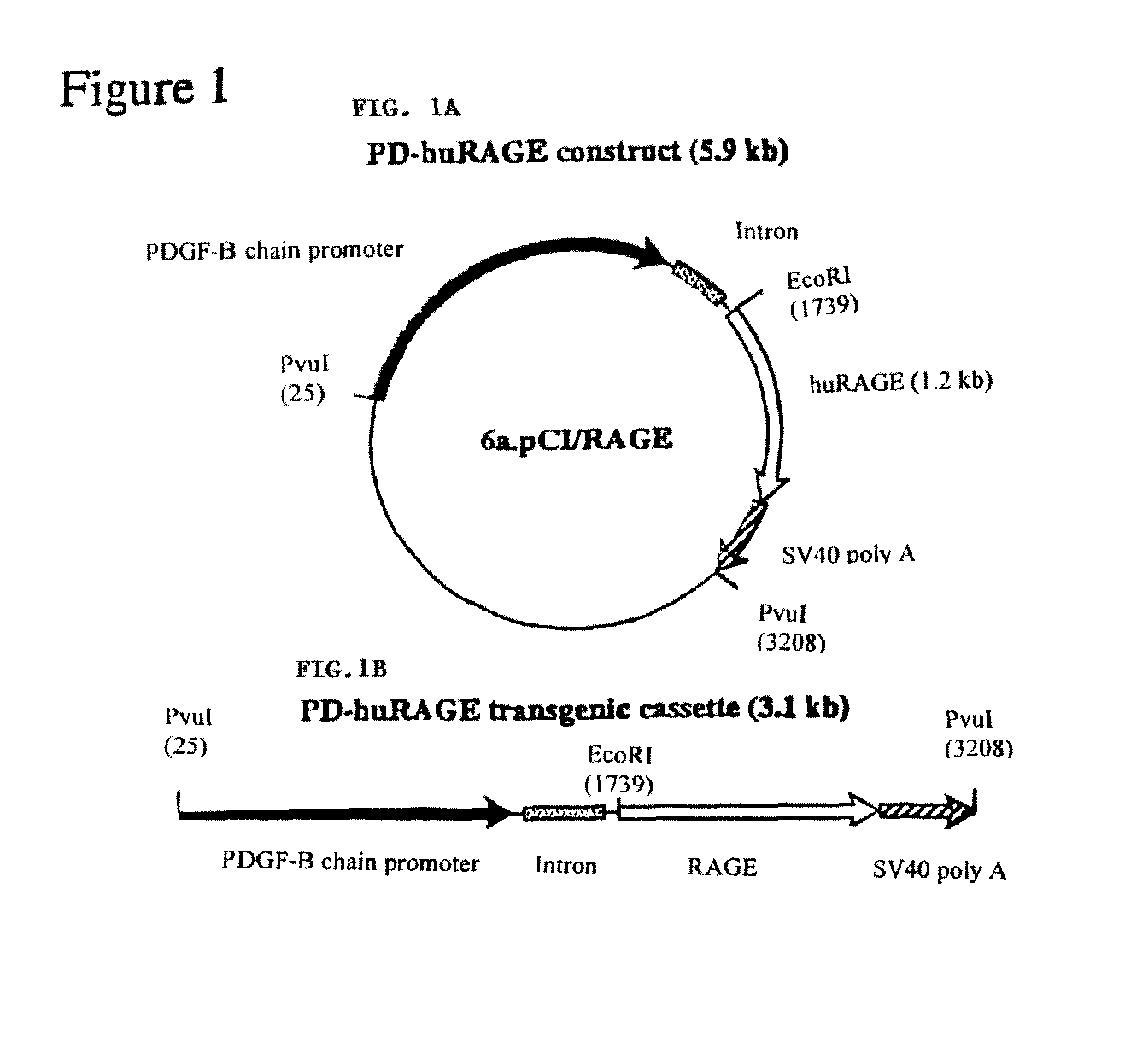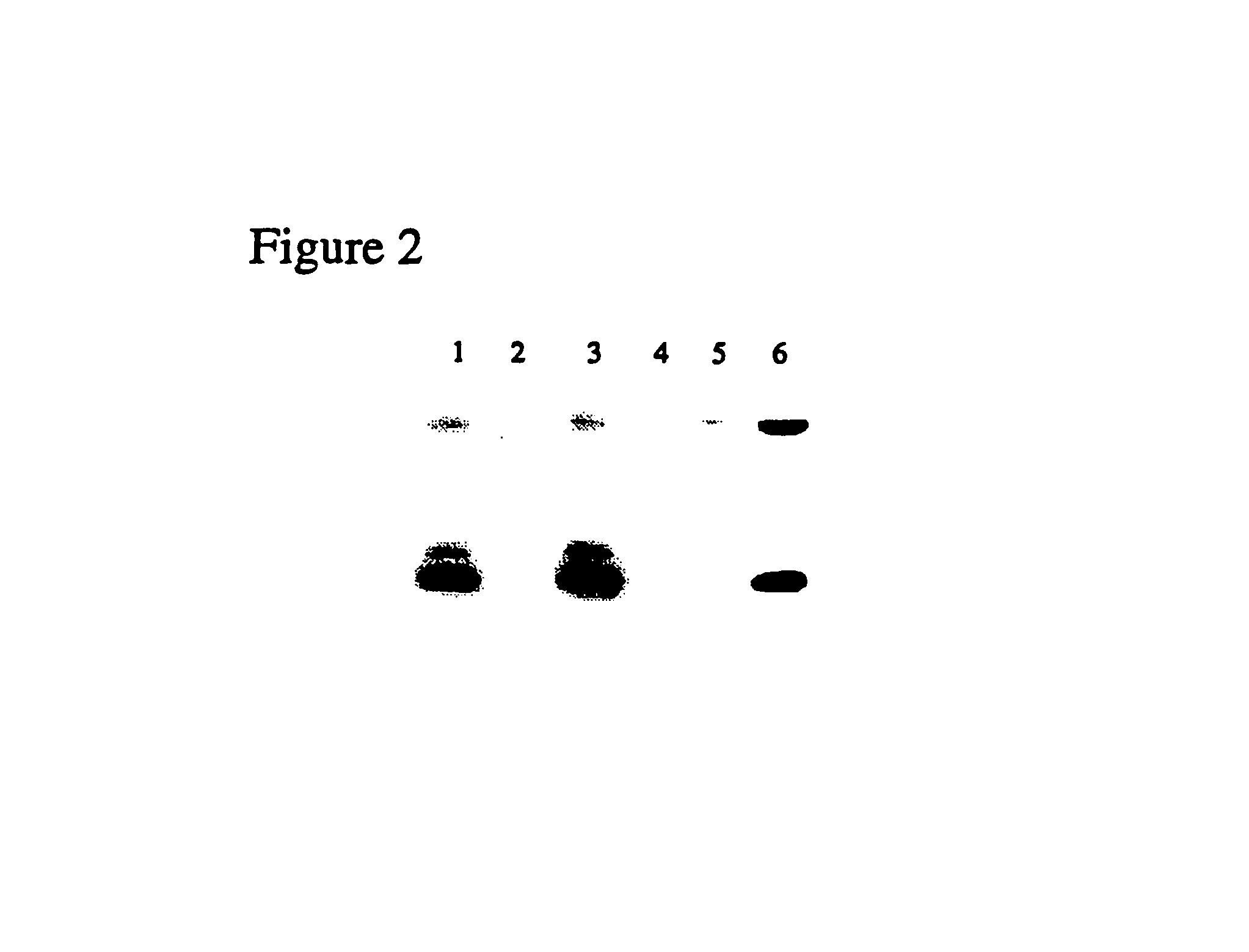Transgenic mice over-expressing receptor for advanced glycation endproduct (RAGE) in brain and uses thereof
a rage and receptor technology, applied in the field of rage in the brain, can solve the problems of patient loss of identity, autonomy, freedom, etc., and achieve the effects of reducing basal synaptic transmission, preventing or reducing the onset or progression of rage, and reducing synaptic plasticity
- Summary
- Abstract
- Description
- Claims
- Application Information
AI Technical Summary
Benefits of technology
Problems solved by technology
Method used
Image
Examples
example 1
Generation of Transgenic Mice with Targeted Overexpression of Receptor for Advanced Glycation Endproducts (RAGE) in Neurons
[0084]This paper describes a means of making transgenic mice with targeted overexpression of RAGE in neurons using the PDGF B-chain promoter and the cDNA for human full-length RAGE. The mice, termed Tg PD-RAGE, which have been produced provide a model system for determining the consequences of heightened RAGE expression in neurons, and could serve as an important model system to test RAGE blockers, either inhibitors of ligand-receptor interaction or inhibitors of RAGE-dependent intracellular signalling. Cross-breeding of Tg PD-RAGE with other animals, such as those expressing a transgene causing overexpression of mutant amyloid precursor protein (resulting in increased production of amyloid-beta peptide) provide a model system to assess the effects of RAGE in an Aβ-rich environment in the brain relevant to Alzheimer's disease. In addition, isolation and culture ...
example 2
Induction of Transient Middle Cerebral Artery in RAGE Transgenic Mice and Use of this Transgenic Mouse Model for Stroke in Humans
Methods:
Induction of Transient Middle Cerebral Artery Occlusion in the Mouse
[0125]Induction of stroke in Tg PD-RAGE mice. Functional consequences of overexpression of RAGE were first assessed in response to ischemic stress, the transient middle cerebral artery occlusion model. Murine stroke model Mice (C57BL6 / J, male) were subjected to stroke according to previously published procedures32. Following anesthesia, the carotid artery was accessed using the operative approach previously described in detail33, including division / coagulation of the occipital and pterygopalatine arteries to obtain improved visualization and vascular access. A nylon suture was then introduced into the common carotid artery, and threaded up the internal carotid artery to occlude the origin of the right middle cerebral artery (MCA). Nylon (polyamide) suture material was obtained from...
PUM
| Property | Measurement | Unit |
|---|---|---|
| diameter | aaaaa | aaaaa |
| pH | aaaaa | aaaaa |
| thick | aaaaa | aaaaa |
Abstract
Description
Claims
Application Information
 Login to View More
Login to View More - R&D
- Intellectual Property
- Life Sciences
- Materials
- Tech Scout
- Unparalleled Data Quality
- Higher Quality Content
- 60% Fewer Hallucinations
Browse by: Latest US Patents, China's latest patents, Technical Efficacy Thesaurus, Application Domain, Technology Topic, Popular Technical Reports.
© 2025 PatSnap. All rights reserved.Legal|Privacy policy|Modern Slavery Act Transparency Statement|Sitemap|About US| Contact US: help@patsnap.com



